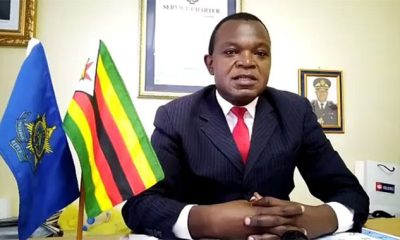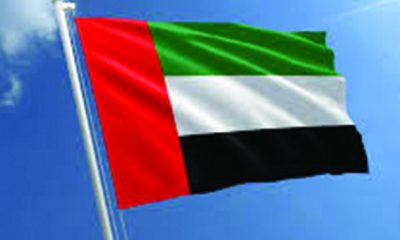Innocent Mujeri Herald Correspondent
ZIMBABWE commemorates its 44th year of independence today.
This is not merely a moment of reflection but also for celebration.
This celebration is markedly highlighted by the notable progress the country has achieved under the leadership of President Mnangagwa.
With Vision 2030 in sight, President Mnangagwa’s administration is steering the nation towards a promising future characterised by broad-spectrum development and reinvigorated international relations.
Under the Second Republic, Zimbabwe has initiated a bold journey of transformative economic reforms that are steering the nation towards recovery and sustainable growth.
At the heart of these reforms is the National Development Strategy 1, a pivotal policy measure designed to stabilise the economy, attract foreign investment, and create jobs.
This initiative is fundamental in addressing and rectifying the macro-economic distortions that have historically undermined Zimbabwe’s economic potential.
By laying a robust foundation for sustainable economic growth, the NDS1 has begun to demonstrate substantial outcomes: the economy is showing signs of gradual recovery, investor confidence is being rejuvenated and the shadows of hyperinflation and economic instability are receding.
Moreover, the introduction of the Zimbabwe Gold (ZiG) and reforms to the foreign exchange market, have been crucial in restoring monetary stability and curbing the rampant inflation that once crippled the economy.
Infrastructure development has become a cornerstone of Zimbabwe’s strategy for economic revival under President Mnangagwa’s administration, receiving an unprecedented boost across various sectors.
Government’s concentrated efforts on upgrading critical infrastructure such as roads, energy, water systems and telecommunications are pivotal in enhancing national connectivity and facilitating seamless trade.
Notable among these is the extensive upgrading of the Harare-Beitbridge Highway, a project that promises to transform one of the most important arterial roads in Southern Africa.
Previously marked by its deteriorating condition and inefficiency, this highway is now being revitalised into a modern thoroughfare, expected to greatly enhance the movement of goods and people, thereby stimulating economic activities along this vital corridor.
Additionally, the development of the Mbudzi Interchange in Harare is a significant milestone in furthering the country’s infrastructural advancement.
This project, aimed at easing traffic congestion and improving road safety, is testament to the Government’s commitment to modernising urban transport networks.
Beyond transportation, there has also been a significant push to improve the energy sector, with upgrades to power generation and transmission facilities aimed at reducing energy shortages that have historically hampered industrial and residential growth.
In telecommunications, Government has embarked on expanding digital infrastructure, enhancing internet accessibility and reliability across the country.
These developments not only improve the quality of life for Zimbabweans but also create a more attractive environment for foreign and local businesses, fostering economic growth and promoting Zimbabwe as a key investment destination.
Agriculture has a pivotal role in Zimbabwe’s economy, providing the primary livelihood for a large portion of the population and contributing significantly to the nation’s GDP. Recognising this, President Mnangagwa’s administration has focused substantial efforts on revitalising this sector through innovative initiatives like the National Enhanced Agricultural Productivity Scheme (NEAPS) and the Pfumvudza/Intwasa programme.
These Government-led initiatives are meticulously crafted to enhance agricultural productivity, particularly among smallholder farmers, who form the backbone of Zimbabwean agriculture.
By supplying these farmers with essential inputs, such as seed, fertilisers and irrigation technology, along with comprehensive training on modern farming techniques, these programmes aim, not only to boost yield, but also to elevate the quality of agricultural produce across the nation.
The strategic emphasis on agricultural development through these programmes serves a dual purpose.
Firstly, it aims to achieve food security within the country. By increasing local production, these initiatives help reduce dependency on food imports, moving Zimbabwe towards agricultural self-sufficiency.
Secondly, by improving the efficiency and output of agriculture, the initiatives contribute to the stabilisation of food prices within the domestic market, making food more affordable for Zimbabweans.
This approach not only supports the livelihoods of farmers by ensuring a stable income but also stimulates rural economies through increased spending and investment in agricultural inputs and infrastructure.
Through these concerted efforts, Government aims to transform agriculture into a modern, sustainable and profitable sector, crucial for the nation’s economic health and growth.
The revitalisation of social services is also another area where President Mnangagwa’s Government has made substantial strides.
The expansion of educational facilities and improvements in healthcare systems are geared towards building human capital that can drive future growth.
By increasing access to quality education and healthcare, Zimbabwe is investing in its most valuable asset, its people. This focus on human capital development is essential for a country that aims to transform its economic landscape and improve living standards.
On the international stage, President Mnangagwa has pursued a policy of re-engagement with the global community.
Shifting from Zimbabwe’s previous international isolation, this policy has rekindled relationships with multiple countries and international entities, fostering partnerships that are crucial for economic and technological co-operation.
These relationships not only enhance diplomatic ties but also open doors for trade and investment, which are crucial for Zimbabwe’s integration into the global economy.
As Zimbabwe moves forward, the sense of optimism under President Mnangagwa’s leadership is palpable.
The nation is seeing a resurgence of hope and national pride as it works towards overcoming past challenges.
This journey is marked by significant milestones that signify a departure from old struggles toward new achievements.
Zimbabwe’s progress under President Mnangagwa showcases a nation in transformation, fuelled by a commitment to reform, unity, and inclusiveness.
As these initiatives continue to unfold, they hold the promise of realising a prosperous and inclusive Zimbabwe by 2030, an aspiration that once seemed distant but now appears within reach.
This new era of leadership and development serves not only as a testament to Zimbabwe’s resilience but also as an inspiration to nations worldwide striving for renewal and progress.


 Business5 months ago
Business5 months ago
 music2 weeks ago
music2 weeks ago
 travel3 weeks ago
travel3 weeks ago
 money markets2 weeks ago
money markets2 weeks ago
 gospel2 weeks ago
gospel2 weeks ago
 gospel2 weeks ago
gospel2 weeks ago
 gospel2 weeks ago
gospel2 weeks ago









You must be logged in to post a comment Login